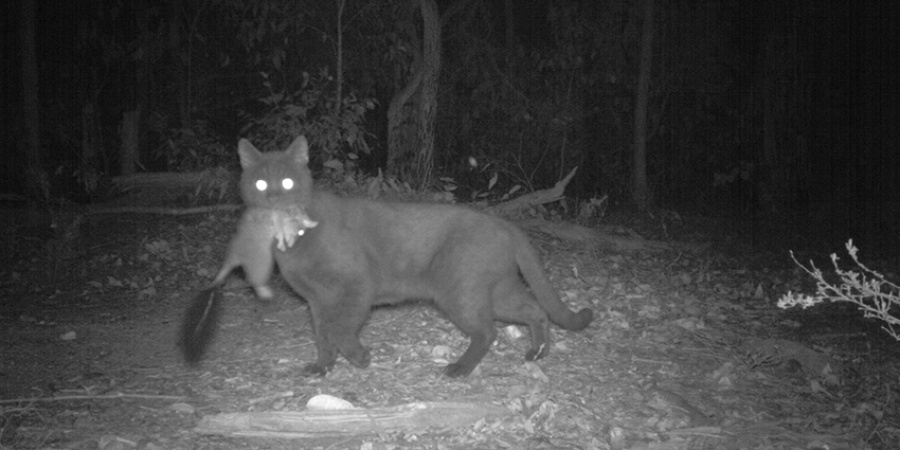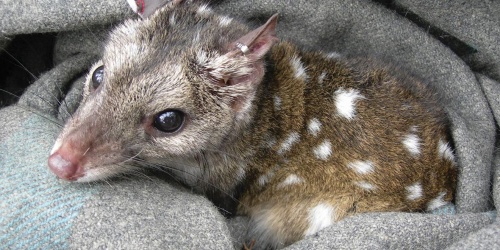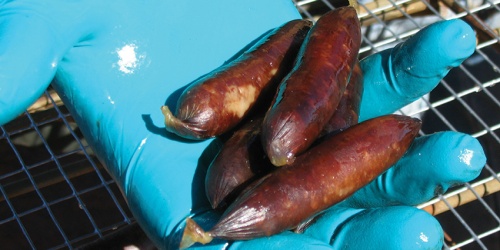Feral cats
Feral cats are recognised as primary threats in the decline and extinction of numerous native animal species. Learn how this significant conservation priority is managed in Western Australia.

Scientific name: Felis catus
Status: Declared Pest under Biosecurity and Agriculture Management Act 2007
In Western Australia, feral cats pose a significant threat to the State's native animals, with 36 mammal, 22 bird, and 11 reptile species currently vulnerable to predation.
DBCA primarily focuses on managing feral cats where they impact biodiversity and conservation values, such as threatened fauna species, including chuditch and numbats.
Despite the numerous challenges in managing these highly adaptable introduced carnivores, the department has achieved notable success through Western Shield, WA’s largest conservation program for controlling introduced predators. Our agency’s research continues to identify improvements to feral cat management for native species conservation.
The impact of feral cats on Western Australia's biodiversity
The Australian Government has recognised feral cats as a primary threat in the decline and extinction of numerous native animal species nationwide. Feral cats continue to pose a heightened risk to the survival of native species that currently have low population densities, such as western ground parrot and Gilbert’s potoroo.
Predation by feral cats has been pinpointed as a significant barrier to rebuilding threatened animal communities. It has hindered the successful reintroduction of multiple species to areas within their former habitats. This makes suppression of feral cat populations crucial for the successful reintroduction, recovery, or maintenance of extant native fauna populations.
Managing Western Australia's feral cat problem
Controlling feral cat populations is a significant conservation priority that requires effective management of interacting factors such as fire, habitat fragmentation, and other invasive species, using various management tools.
Managing feral cats on a landscape scale presents significant challenges. Feral cats are widespread across the continent. Besides predator exclusion fenced sites, mainland landscapes and reserves are open systems, leading to a high risk of re-invasion despite the best efforts at localised control.
Feral cats are also highly well-adapted to many different environments and can take a wide variety of prey, which makes it easier for them to survive in the wild. They also quickly learn to avoid baits and traps.
DBCA employs prioritisation strategies that consider the conservation status of key native fauna species, their distribution, vulnerability to introduced predators, and the likelihood of recovery with introduced predator control.
This process, combined with site feasibility criteria, guide the priorities for implementing feral cat management.
Management tools
Various management tools, such as baiting, Felixer grooming traps, trapping, shooting, and exclusion fencing, are utilised within an integrated management framework.
This comprehensive approach helps mitigate feral cats' impact on native species, supporting ongoing conservation efforts.
Learn more about using Eradicat for feral cat management and 1080 baiting.
External resources
Managing feral cats in WA
DBCA is implementing actions in the Feral Cat Strategy, including expanding the area that Western Shield delivers cat baiting. This will integrate the patented feral cat bait, Eradicat®, to new sites in the Wheatbelt and South Coast areas to reduce the impact of feral cats on our native fauna. 1080 baiting is recognised as the most effective method for landscape-scale management of feral cats on mainland Australia. However, new technologies are continually investigated under the Feral Cat Strategy research program, and DBCA will integrate these new approaches as they become available.
Despite the numerous challenges faced in managing invasive predators to rebuild threatened animal communities, DBCA has achieved notable successes, including recovery or protection of:
- black-flanked rock-wallabies in the Calvert Ranges and Cape Range in the Pilbara
- marine turtles at Ningaloo Coast, Jurabi Coast, Cape Range National Park, Bundera and Munda Station
DBCA, in collaboration with the traditional owners, the Wiluna Martu, has been working to restore ecosystem function and biodiversity in the WA Goldfields. Managing feral cats is necessary for reintroducing several arid zone mammal species that have become locally extinct in this area. The first mammal reintroductions commenced in 2007 with the release of free-ranging bilbies (Macrotis lagotis) and brushtail possums (Trichosurus vulpecula). Between 2010 and 2012, mala (Lagorchestes hirsutus), Shark Bay mice (Pseudomys fieldi), boodies (Bettongia lesueur), and golden bandicoots (Isoodon auratus) were translocated into a 1,100-hectare predator-free fenced enclosure.
Learn more about Western Shield, WA’s largest conservation program.
Legislation underpinning the management of feral cats in WA
Feral cat management operates within several legislative frameworks and strategies at both national and state levels, which aim to protect fauna of state and national significance.
The following strategies and policies relate directly to the management of feral cats.
National and state-level policies and strategies underpin invasive animal management undertaken in WA.
| Feral cats - Department of Primary Industries and Regional Development | Provides strategies and direction to minimise potential risks of harm to domestic cats from the declaration of feral cats as declared pests. |
| Feral cat strategy for WA | The WA Feral Cat Strategy is the first in Australia and complements the National Threat Abatement Plan for Feral Cats. It provides a framework for a consistent and coordinated approach to managing feral cats across our vast State. It will see enhanced feral cat management across priority Western Shield sites and partnerships with stakeholders. Download the strategy (2MB PDF) |
Research
Over the last 30 years, the department has led the development of management tools through research on feral cats in Western Australia and is recognised both nationally and internationally in this area.
Our agency undertakes research to develop effective baiting strategies and identify opportunities to implement other control methods for effective and sustained feral cat management.
Trials have been undertaken in various ecosystems, with current and future investigations aiming to further examine the effects of season, baiting intensity and baiting frequency needed to improve the effectiveness of baiting programs and optimise sustained control.
Research programs have also contributed to comprehensive risk assessments of the potential impact of feral cat baiting programs on populations of non-target species and, where necessary, methods devised to minimise this risk and improve the effective delivery of feral cat management.


